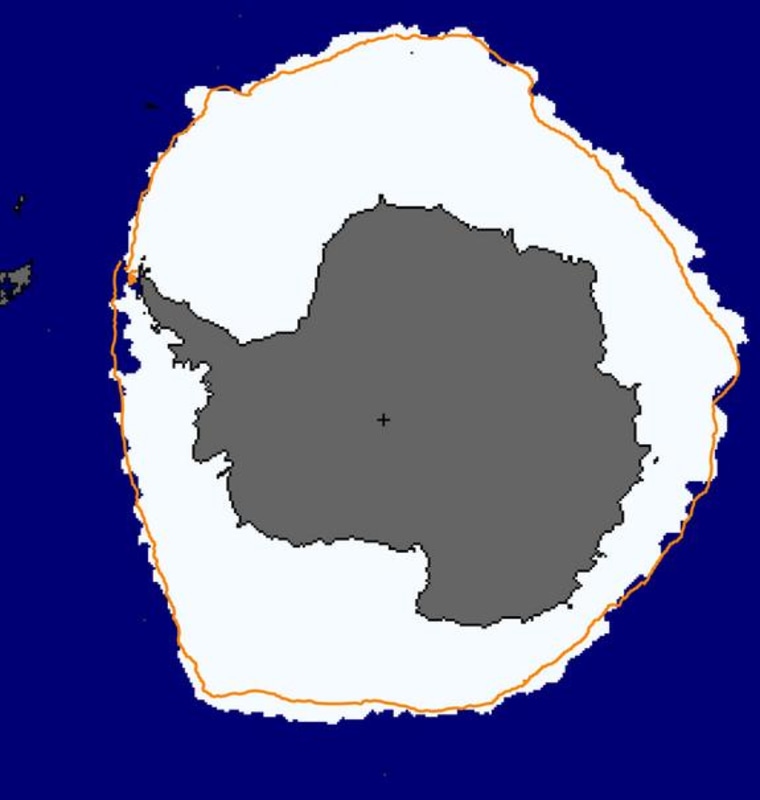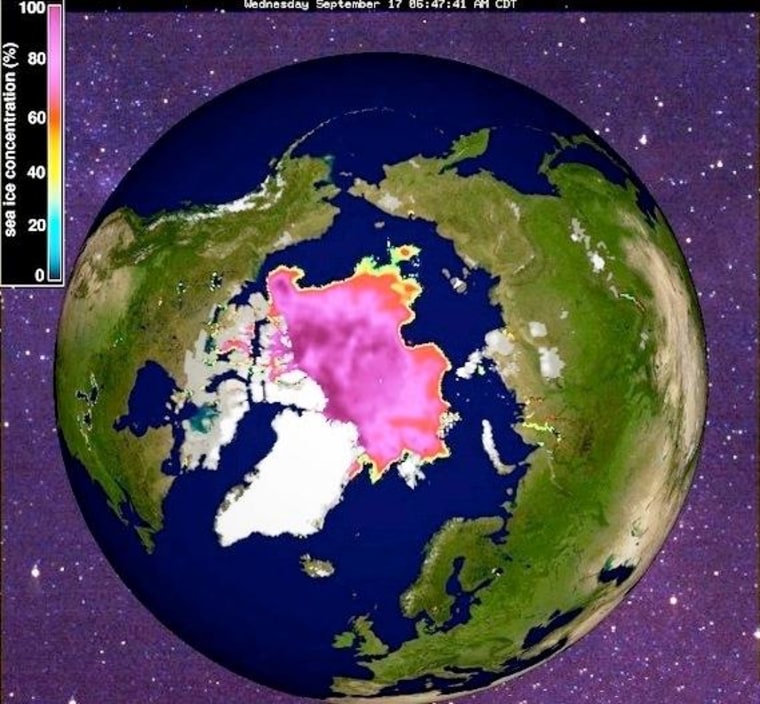The Southern Hemisphere's unrelenting winds and frigid air froze ocean water into 7.6 million square miles (19.7 million square kilometers) of Antarctic sea ice this southern winter, the National Snow and Ice Data Center said Tuesday.
With several more weeks of growth to go, Antarctica's sea-ice extent could soar well above the records set in 2012 and 2013. For now, only 88,800 square miles (230,000 square kilometers) separate the 2013 and 2014 high marks. [Photo Gallery: Antarctica's Pine Island Glacier Cracks]
Sea-ice extent is the total ocean area in which the ice concentration is at least 15 percent, as measured by satellite.

Antarctica's record-breaking ice growth contrasts with shrinking sea ice in the Arctic. The Arctic ice cap hit its summer minimum of 1.96 million square miles (5.07 million square kilometers) on Monday, NSIDC said. Covering an area roughly twice the size of Greenland, the expanse is the sixth lowest minimum since satellite tracking started in 1979. The numbers are essentially the same as 2013's low.
At both poles, sea ice shrinks and expands each year with summer heat and winter cold, though in the Arctic, some ice sticks around each year.
Arctic summer sea ice has declined by about 30 percent since 1979. Sea-ice experts said changes wrought by global warming are responsible for both the Arctic's long-term decline and Antarctica's surprising increase. However, the link between climate change and melting ice is clearer in the Arctic than in Antarctica.

In Antarctica, some regions of sea ice are expanding, such as the Ross Sea. Other areas, such as the Bellingshausen Sea, are shrinking. The net effect is long-term growth of about 1 percent per decade. At the same time, Antarctica's land-based ice sheet continues to shrink.
Researchers think Antarctica's record-high ice extents could result from stronger winds. Studies show that the southern polar vortex is blowing closer to the continent as a result of the ozone hole and greenhouse gases. The winds help pack ice more tightly and also shift ocean currents in a way that drives ice formation.
— Becky Oskin, LiveScience
This is a condensed version of a report from LiveScience. Read the full report. Email Becky Oskin or follow her on Twitter. Follow LiveScience on Twitter, Facebook and Google+.